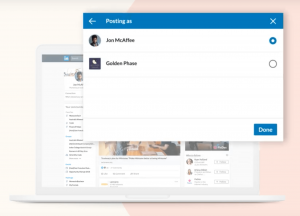How To Optimize Return On AVOD Spend? Roku Offers Points To Consider
This year’s NewFronts and upfronts saw significantly increased focus on ad-supported video-on-demand streaming services.
WarnerMedia, for example, reported strong upfront advertising commitments for the AVOD version of HBO Max.
Knowing that consumers — and therefore advertisers — will be drawn to the free options that aggregate the most premium content, Crackle Plus, Tubi, IMDB TV and fuboTV, as well as Roku, announced plans to debut original AVOD content.
But for advertisers, content isn’t — or shouldn’t be — the only factor in determining which AVODs can help them yield maximum return, says Meredith Goldman, vice president, publisher ad solutions at Roku.
Obviously, Roku has major skin in this game. Still, based on having observed many AVOD buys in recent years, Goldman’s responses to some ATV Insider questions about how to optimize these buys are worth sharing.
Beyond content quality, what are the most important elements in optimizing return on AVOD media investments?
Goldman: Breadth of access and data available for optimization are key differentiators and value drivers, and therefore key considerations in prioritizing spend.
Advertisers should evaluate which partners allow them to buy in a scalable, automated process with quality inventory. You want the most exclusive and direct access possible. That will enable entry to the highest position in a publisher’s ad server.
The types and quality of audience segments and other data available for layering in to optimize targeting are also crucial, of course. The value of the data available from specific AVODs will be weighted differently, depending on the in-house data or publisher data to which a brand already has access.
AVOD is still new to advertisers. While they recognize that they need to allocate more spend here, they should also understand that they need to be able to measure it alongside their traditional linear spend to determine the real value of the available inventory options. Publishers can help by bringing in the right measurement tools, but choosing AVOD partners that can help with cross-platform measurement can also be beneficial.
What are the most common or easiest-to-fall-into errors in making AVOD media buys?
Goldman: One common error is not having a thorough understanding of how a brand is going to take advantage of the segmentation offered through AVOD.
Before making buys, brands need to think through who they want to reach and carefully define audience segments. They need to be clear about the segmentation capabilities possible through various AVODs, how well they align with the brand’s targets, and how they want to take advantage of these — including, very importantly, how they will tailor the most effective messages to specific segments. Running the same message or creative across every screen is a waste of the AVOD channel’s most valuable capabilities.
Also, to truly reap the benefits, brands need to put aside traditional linear TV thinking and adopt a streaming-first mindset when making AVOD buys.
For instance, some buyers try to take a channel-by-channel approach to buying AVOD. While channel-by-channel can make sense with linear buys, with AVOD, it’s best to identify a primary platform that can bring it all together to address all of the brand’s key needs. Then you can consider selectively adding other AVODs if there are additional objectives or needs. Otherwise, you end up with only pieces of the puzzle.
How can/should buyers deal with lack of measurement standardization across the platform?
Goldman: Again, at this stage, marketers are still exploring ways to measure OTT alongside traditional linear.
To enable metrics and A/B testing that show what has driven the most value, buyers need either to invest in building measurement tools designed for cross-media marketing, or find a partner that has the ability to measure buys across channels.
The right proprietary tool or partner allows buyers to have a full view. It’s a lot harder to compare and test channel by channel, because it’s never a direct comparison — there is always an exception. You want one methodology across one platform.
Not every brand can invest in building its own measurement tools. Those that don’t need to rely on DSPs or third-party vendors that have integration into the DSPs.
Brands have two options when it comes to DSPs. Some DSPs can build incremental reach to measure streaming off of linear or help with measurement and planning — upstreaming to fill in gaps off of a linear plan. Other DSPs have adopted a streaming-first approach and can help buyers build an audience-first program in streaming and identify what gaps linear can fill in from there.
I’ve seen brands have success with both options, though my view is that more of them will turn to the first option as use of streaming continues to grow.
Will the measurement scenario change in the next few years?
Goldman: Bespoke measurement or measurement systems that are limited to walled gardens aren’t sustainable. There’s a benefit to measuring within walled gardens: You get a level of fidelity and understanding that you don’t get elsewhere. However, that needs to be balanced with a more cross-platform, holistic approach. As advertisers do more OTT/linear campaigns, they are going to demand unified ways to measure their buys. Over time, they will force walled gardens to enable measurement against other platforms or channels.
How can marketers minimize fragmentation, fraud and user experience issues like ad repetition?
Goldman: Again, clear objectives and audience targets that enable strategic use of the segmentation capabilities within AVOD and OTT more broadly are the foundation.
Instead of reaching every viable consumer, marketers need to choose the right audience to maximize overall reach and avoid wasted impressions. As personalization becomes ever-more important, this also helps ensure that consumers get the content most relevant to them and their needs.
And here again, it’s key to do due diligence to select a limited number of partners that are adept at reducing fragmentation and driving better user experiences. It’s also important to work with a partner that offers incremental reach and addressable implementation to ensure that you avoid ad repetition across OTT and linear.
When evaluating a partner, also consider what they are doing specifically to address ad fraud and what practices they are developing or implementing to stay ahead of this.
In most cases, it is wisest for advertisers to buy TV streaming ads directly from sellers with direct consumer relationships. Buyers should get solid assurances that ads appear on channels certified for monetization, and that the partner has aligned with third parties to measure brand safety.
If you feel you must make an exception and buy from a source outside of partners that have these checks and balances, it’s safest to use technology that helps verify the source of ad requests to ensure brand-safe, best-in-class ad experiences.
(58)
Report Post




